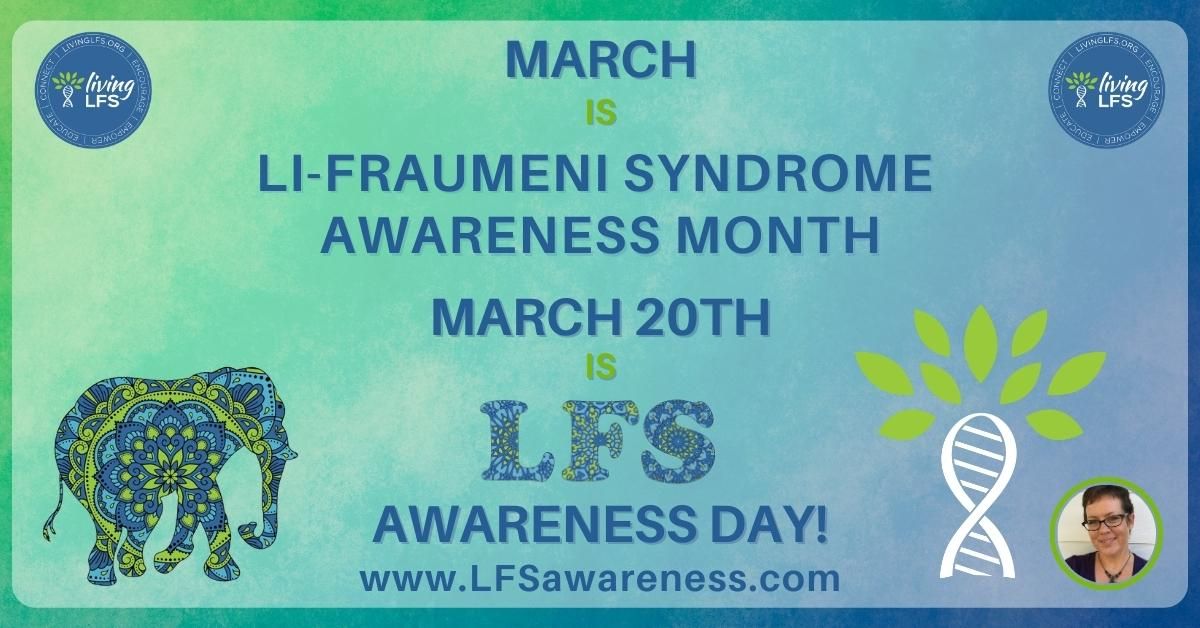Recently in the private Li-Fraumeni Syndrome support group, there was a question about the difference between PET scans and MRI's and which was better. The answer is- it depends. Scans for screening have different considerations than scans that are used to diagnose possible cancers. Many of us living with LFS do our best to avoid radiation exposure where possible. Some refuse to have scans such as a PET (Positron Emission Tomography) scan, which requires a radioactive tracer, plus additional radiation exposure from a CT (Computed Tomography). Others only will consider the scans if there is something that needs to be investigated. MRI (Magnetic Resonance Imaging) seems to be a much better choice for our mutant systems since it doesn't use radiation at all.
Although MRI gets better images of soft tissues, CT really gives better images of bony structures and organs like the lungs that move too much for MRI. The best scan will be the test that will give the radiologist and your doctor the best image while giving you the least amount of radiation possible. In radiology- this is called ALARA- As Low As Reasonably Achievable. As annoying as it is to be asked your height and weight before a scan, this helps radiologists adjust the contrast dose and settings to meet the ALARA principle. Children ultimately get less exposure since they are smaller and the machine is "dialed down" accordingly to protect their growing tissues.
Magnetic Resonance Imaging (MRI)

MRI works by using great big magnets that bounce sound waves off our tissues to create pictures of our insides. Read a more detailed explanation of MRI here.
Positron Emission Tomography/Computed Tomography (PET/CT)

PET Scan uses a sugar molecule attached to a radioactive tracer and a CT image. The theory is that cells that are active are going to need sugar(glucose) to do their work and cancer cells are notorious for working overtime. So with a PET scan - you are injected with the radioactive glucose, you rest for 15-60 minutes to let it find the (metabolically) active cells and then you are put in the special PET/CT scanner to collect the images. But just as MRI can not tell you if a spot is malignant or benign, a PET scan just tells you which areas are active. If you have an infection, such as strep- that area would light up on a PET scan.
MRI vs PET/CT
| MRI | PET/CT | |
| Magnetic Resonance Imaging | Positron Emission Tomography/ Computed Tomography | |
| TIme for scan | About 30-45 min per area scanned (about 2-3 hours whole body) | About 5-10 min per area (about 45 min whole body) |
| Radiation Exposure | None | Moderate |
| Cost | Varies from $1000 to over $4000 | Varies from $3000 and up |
| Effects | No hazards reported | Risks from radiation |
| Soft Tissue | Higher detail in soft tissues | Less detailed, better for tumors >2cm. |
| Bony Structures | Less detailed | More detailed |
| Best for | Soft tissues, inflammation, cross section pictures. | Bone injuries, lung and chest imaging, cancer detection, showing metabolic activity |
| Advantages | Can change the contrast of images, superior for detection of tumors, no radiation, few side effects to contrast | Good for imaging metabolic activity, shorter time in scanner |
| Disadvantages | Claustrophobia, can not use with metal implants, takes time and you have to be still. Cost. | Uses ionizing radiation. Cost. Availability. |
Risks Vs. Benefits
So how do we balance the risks and the benefits from scans? It is often said in our group "a scan is only as good as the doctor reading it". The same goes for ordering scans when you have LFS. It is very important to speak with your doctor and that they understand your concerns about cancer and potential radiation exposure. It is also important to keep an open mind and listen to your doctor when they have a concern that leads them to order a scan. A cancer that goes undetected, cannot be treated. Some questions to ask you doctor when discussing further tests:
Is it necessary?
What are the benefits?
What are the risks?
Is this scan going to give us the most amount of information with the least amount of radiation?
By understanding what the scans are and how doctors use them to diagnose and treat, we can better advocate for ourselves while living LFS. Radiation is all around us and can be dangerous to our already mutated cells. But radiation can be very useful in diagnosing tumors, we just have to find the balance between risks and benefits and one of the best ways to do this is to speak with your doctor about it.
References
RadiologyInfo.org
http://www.radiologyinfo.org/en/safety/?pg=sfty_xray
CT Scan vs MRI
http://www.diffen.com/difference/CT_Scan_vs_MRI
PET/CT Screening and LFS
Dana Farber: Scans Spot Hidden Tumors in Rare Cancer Syndromes


